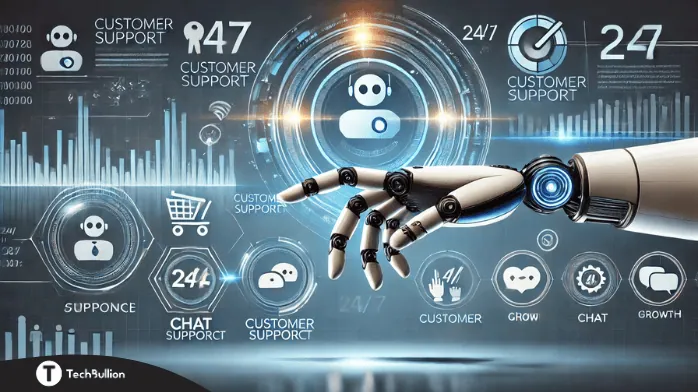
In today’s fast-paced digital world, customer experience has become a cornerstone for business success. Companies striving to deliver exceptional service often find themselves facing tight schedules, growing demands, and limited resources. This is where automation in enhancing customer experience plays a transformative role. By streamlining operations, improving service delivery, and ensuring consistency, automation enables businesses to meet and exceed customer expectations.
This article dives deep into how automation enhances customer experience, its benefits, practical applications, and why it’s an indispensable tool for businesses aiming to thrive in competitive markets.
What Is Automation in Customer Experience?
Automation in customer experience refers to the use of technology to manage repetitive tasks, streamline workflows, and improve interactions with customers. This includes chatbots, automated ticketing systems, AI-driven analytics, and more. The goal is to provide customers with fast, consistent, and reliable service while freeing up human teams to focus on more complex and meaningful tasks.
Key Benefits of Automation in Enhancing Customer Experience
1. Boosts Speed and Efficiency
One of the most significant advantages of automation is its ability to handle tasks instantly. For example:
- Chatbots: These AI-powered tools respond to customer queries in real time, resolving common issues without delay.
- Automated Ticketing Systems: Customer complaints or inquiries are quickly logged and assigned to the appropriate department.
By eliminating delays, businesses not only improve customer satisfaction but also build trust and loyalty.
2. Ensures 24/7 Availability
Automation allows businesses to remain accessible around the clock, an essential feature in industries such as travel, e-commerce, and healthcare. For example:
- AI Assistants: These tools can handle bookings, provide information, and resolve issues even outside of regular business hours.
- Automated Self-Service Portals: Customers can resolve issues independently through FAQs, tutorials, or troubleshooting guides.
By leveraging automation, businesses demonstrate their commitment to meeting customer needs at all times, thereby enhancing reliability.
3. Delivers Consistent Service
Human errors can lead to inconsistent service, but automation ensures every customer receives the same level of care. Examples include:
- Billing Systems: Automated invoices are accurate, timely, and easy to track, reducing misunderstandings.
- Customer Support: Automated systems organize inquiries efficiently, ensuring no ticket is overlooked and customers are served promptly.
Consistency builds customer confidence, ensuring they know what to expect from your business.
4. Supports Business Growth
As businesses grow, maintaining high-quality customer interactions can become challenging. Automation helps manage increasing workloads without compromising service quality. For instance:
- Subscription Renewals: Automated notifications and billing ensure seamless renewals, keeping customers informed and engaged.
- Scalable Support Systems: Automation enables businesses to handle larger volumes of inquiries as customer bases expand.
By accommodating growth, automation empowers businesses to focus on innovation while maintaining exceptional customer experiences.
5. Improves Personalization
Contrary to the misconception that automation is impersonal, advanced tools can provide highly personalized experiences. Examples include:
- AI-Driven Recommendations: Platforms like e-commerce sites use automation to suggest products based on browsing history or preferences.
- Automated Follow-Ups: Personalized emails or messages tailored to customer behavior foster engagement and loyalty.
Personalization through automation ensures customers feel valued, deepening their connection with your brand.
Practical Applications of Automation in Enhancing Customer Experience
1. Chatbots for Instant Support
Chatbots are one of the most popular automation tools for customer service. They handle routine inquiries, such as tracking orders or answering FAQs, allowing human agents to focus on complex issues. Advanced chatbots even use natural language processing (NLP) to deliver more human-like interactions.
2. CRM Automation
Customer Relationship Management (CRM) systems streamline customer data management. They can automatically track customer interactions, set reminders for follow-ups, and provide insights to improve engagement strategies.
3. Automated Feedback Systems
Gathering feedback is essential for improving services. Automated surveys sent via email or SMS after a purchase or service interaction provide valuable insights into customer satisfaction.
4. AI-Powered Analytics
Automation can analyze customer behavior and preferences to identify trends and predict needs. This data help businesses optimize their strategies, ensuring they stay ahead of customer expectations.
5. Omnichannel Automation
Automation enables seamless integration across various communication channels, such as social media, email, and phone. This ensures customers receive consistent service regardless of how they choose to engage with the business.
How Automation Builds Brand Loyalty
By integrating automation into customer experience, businesses can cultivate long-term relationships with their customers. Here’s how:
- Speed and Efficiency: Fast responses make customers feel valued.
- Reliable Availability: Round-the-clock support demonstrates commitment.
- Consistency: Accurate and predictable service builds trust.
- Personalization: Tailored experiences show customers you care about their preferences.
These factors collectively enhance customer satisfaction, which is a key driver of brand loyalty.
Challenges of Implementing Automation and How to Overcome Them
While automation offers numerous benefits, it’s not without challenges. Businesses must address the following:
- Initial Costs: Setting up automation tools can be expensive. Start small with scalable solutions to manage costs effectively.
- Loss of Human Touch: Over-automation can feel impersonal. Combine automated tools with human oversight to maintain a balance.
- Integration Issues: New automation tools should seamlessly integrate with existing systems. Work with reliable vendors to ensure compatibility.
- Data Security: Automation involves handling sensitive customer data. Invest in robust cybersecurity measures to protect customer information.
Overcoming these challenges ensures businesses maximize the benefits of automation while maintaining a customer-centric approach.
Future Trends in Automation in Enhancing Customer Experience
As technology continues to evolve, automation is set to revolutionize customer experience even further. Emerging trends include:
- AI-Driven Virtual Assistants: Advanced AI tools capable of handling complex queries and providing more personalized interactions.
- Voice Automation: Voice-activated assistants are becoming increasingly popular in customer service.
- Predictive Analytics: Automation will leverage big data to anticipate customer needs and offer proactive solutions.
- Hyper-Personalization: AI will use detailed customer profiles to deliver highly customized experiences.
Adopting these trends early can give businesses a competitive edge in delivering exceptional customer service.
Conclusion
Automation in enhancing customer experience is not just a trend; it’s a necessity for businesses looking to thrive in today’s competitive landscape. By improving speed, availability, consistency, and scalability, automation empowers companies to meet and exceed customer expectations. Moreover, it allows human teams to focus on strategic, high-value tasks, fostering innovation and growth.
Whether you’re a small business or a large corporation, embracing automation can significantly elevate your customer experience, driving loyalty and long-term success. Start by identifying areas in your operations that can benefit from automation and invest in tools that align with your goals.
Automation isn’t just about efficiency—it’s about creating meaningful, seamless experiences that keep your customers coming back.




